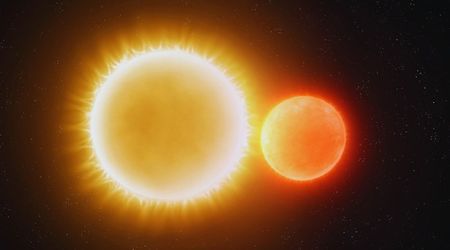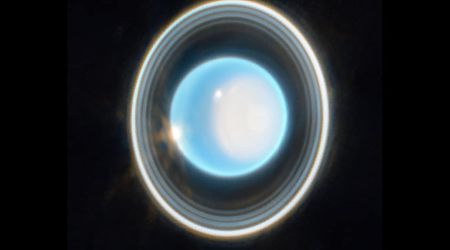New UK-built space vehicle aims to slash Mars travel time in half with breakthrough tech

Pulsar Fusion recently unveiled its Sunbird Migratory Transfer Vehicle, a groundbreaking nuclear fusion rocket designed to drastically reduce space travel times, specifically cutting the Earth-to-Mars journey in half. Developed in secret over the past decade, this revolutionary concept made its public debut at the Space-Comm Expo on March 11 and has been generating significant buzz ever since, as per Newsweek.

The company further showcased the Sunbird's capabilities with a new animated video this week. The animation depicts the rocket departing from a dock and attaching to a larger spacecraft, demonstrating its ability to propel the combined craft forward at high speeds through space. The Sunbird's power source is based on nuclear fusion technology — a process defined by the International Atomic Energy Agency as the combination of two light atomic nuclei to form a heavier one, releasing immense energy. Pulsar Fusion's nuclear fusion propulsion system was developed entirely by its in-house team of scientists.
To facilitate testing of its technology, Pulsar Fusion built two of the largest testing chambers in the UK. The company's CEO stated earlier this year that they plan to expand rapidly, highlighting the concept's potential for scalability. Richard Dinan, CEO of Pulsar Fusion, shared with Newsweek that "Nuclear fusion is the pinnacle of space propulsion technology. These reactors are uniquely suited to operate in orbit, where there's no atmosphere. In many ways, it's more practical to use fusion for in-space propulsion than it is for energy generation on Earth." "That said," he continued, "we must pursue fusion for both energy and propulsion, and I believe humanity will ultimately succeed in both. The recent acceleration in AI capabilities has mega implications for fusion. Machine learning models help us manage ultra-hot plasmas with far greater precision, enabling reactors to become smaller, more intelligent, and vastly more practical."
Initially founded as Applied Fusion Systems in 2013, Pulsar Fusion has made strides in space propulsion. In 2023, the UK Space Agency provided funding for their work — in collaboration with several institutes, including the University of Cambridge — on integrated nuclear fission power systems for electric propulsion. Pulsar Fusion isn't alone in this endeavor. In 2019, NASA also announced its research into "fusion-driven rockets (FDR)," which it described as "a revolutionary approach to fusion propulsion," noting that "it is believed that the FDR can be realized with little extrapolation from currently existing technology, at high specific power, at a reasonable mass scale and therefore cost." Currently, nuclear reactors on Earth utilize fission. However, Pulsar's Sunbird rocket employs a distinct fusion formula compared to the fusion technologies being explored for power generation on Earth. While large-scale nuclear fusion is considered a promising clean energy solution, scientists generally believe its practical application for power generation on our planet faces certain limitations.
The Sunbird Migratory Transfer Vehicle is a modular system designed to function as a space tug, rather than an integrated rocket engine within a spacecraft. It's intended to be kept in orbit on a refueling mothership. When needed, it can dock in groups with other spacecraft, essentially acting as a super high-tech cosmic outboard motor. With its enhanced thrust and efficiency, the Sunbird could potentially shorten the travel time to Mars to as little as three months, and to Pluto to just four years, reported New Atlas.









